This autumn, I’ve received a number of emails from new readers who’ve dusted off the radio in their closet and decided to get back into shortwave radio listening and/or ham radio.
I can’t recall another time I’ve gotten so many similar messages and I can only attribute it to the fact so many people across the globe are still having to social distance due to the C-19 pandemic.
There’s.a common theme in the messages I’ve been receiving from readers. Here’s an excerpt from the latest message (note that I removed the model name from this question because, frankly, it’s irrelevant):
“[My radio] seems to be in great working order. It’s been stored in a climate controlled environment and besides needing a little DeOxit on some of the pots, it works like new. I couldn’t be happier! My question to you is, this model is from the 1990s when I used to be hot and heavy into radio. I know technology has advanced by leaps and bounds since then, so as I get back into radio maybe I should invest in a newer model? What do you think or suggest?”
It’s true that radio technology has gone through a massive number of innovations since the 1990s. We’ve seen the advent of Software Defined Radios and portable receivers/transceivers sporting DSP technology. Far be it from me to dissuade anyone from acquiring new gear!
With that said, I also believe that the best radio you have is the one in front of you. Period.
Listening is a skill
You can’t buy it. Whether you’re an SWL or ham radio operator, most of the time you’re on the air, you’re listening. And the best filter you have is the one in your head. I’ll quote from an article I posted many moons ago:
My good friend Vlado (N3CZ) is a case in point: he is one of the most capable ham radio DXers I know. His extraordinary ability to pull intelligible conversations and CW (Morse code) out of the static, even in crowded radio conditions, is simply astounding. Vlado’s main transceiver is nearly two decades old, and by no means a benchmark technically. If you ask Vlad if he uses filters and digital signal processing, he will wisely tell you, in his Macedonian accent: “Your best filter is between your ears.”
The same goes for SWLing. I have spent enough time listening to shortwave and weak DX that I can now pull conversations out of the noise that my (non-radio) friends can barely detect. I’m convinced this is healthy exercise for the old grey matter.
A seasoned radio enthusiast can grab any radio and make the most of it.
Imagine what Joe Walsh could do with a toy guitar…
Do you think the guitar makes him one of the greatest guitarists of all time?
Many of the advances in technology over the past two or three decades has, of course, given us better tools for working weak signals. But more importantly, it’s brought down the price of performance. I can invest $200 in an SDR that will perform as well as or better than multi thousand dollar benchmark receivers from the 1990s. So yes, in terms of equipment, it’s a brilliant time to be an SWL or ham radio operator.
But at the end of the day, your skills are more important your gear.
My advice?
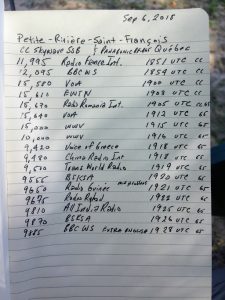 Make the most of the radio you have.
Make the most of the radio you have.
Challenge yourself to log a certain amount of DX with your radio–try to work states, counties, provinces, regions, territories, or countries. Make your own goals!
Get to know your radio so well you can use it blindfolded!
If you still feel you want to invest more in your gear, go for it and don’t look back!
That will be all.
-Thomas

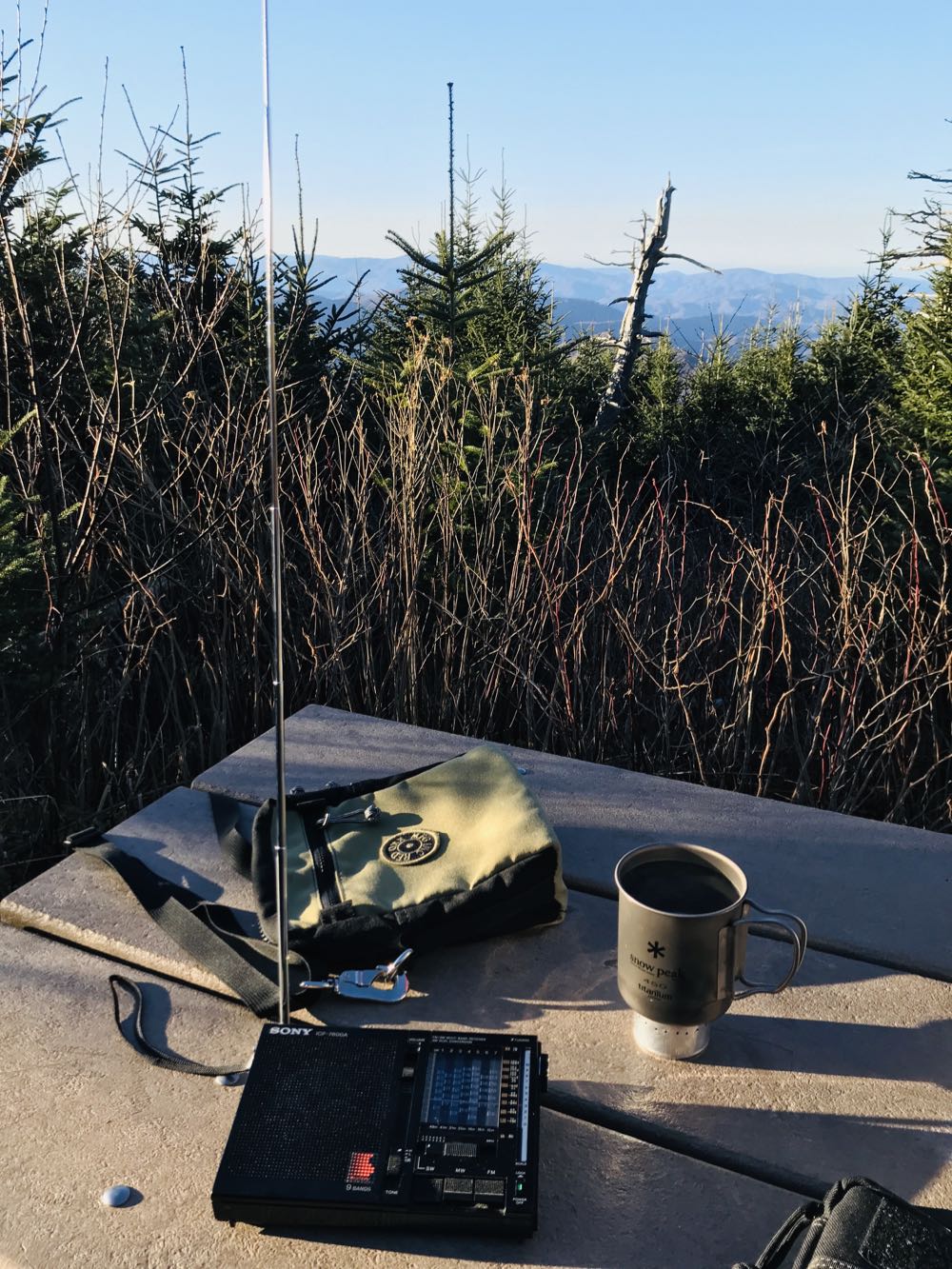
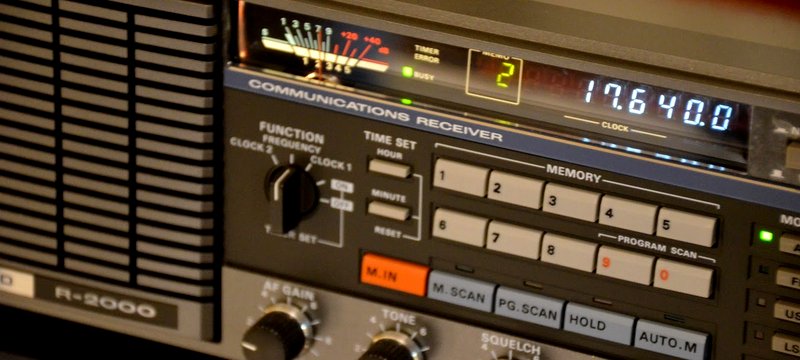
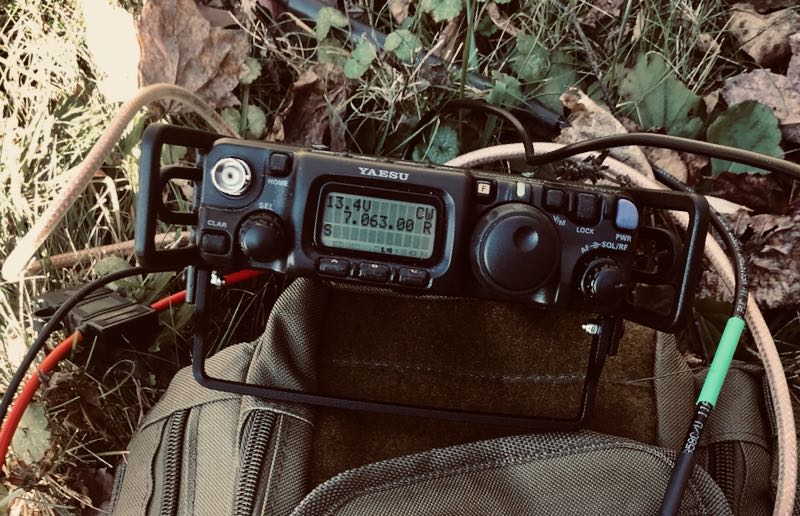
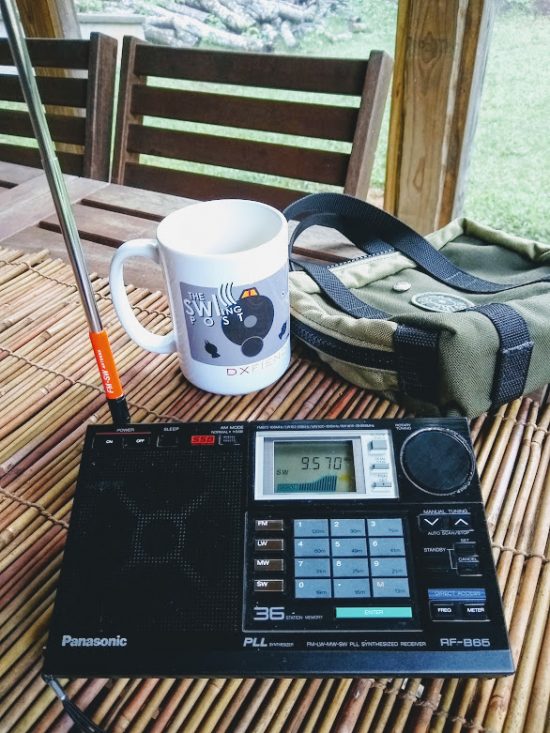
I have handhelds, portables, desktops, SDRs, and even an early 1950’s vintage tube MW/HF receiver.
Let me stress the common dominator for decent HF reception: antennas, antennas…. and did I mention antennas?! 😉 Longwire, loop, dipole, active, or whatever. Even the best receiver often tends to perform poorly when attached to poor antenna system, while conversely a decent antenna system often can improve the HF performance of even affordable portable radios.
As they say down South…run what ya brung! Aside from my tiny Belka-DX that I have fallen in love with, at this time of the year I really enjoy listening to AM broadcast radio in the evenings before I fall asleep. I’m currently using a little Horologe AM/FM DSP radio I found on Amazon for $19.00. This little radio ROCKS, and there are hours of listening in English on the AM broadcast band from all over America. In the past when I would motorcycle camp I always brought along some compact SW radio to listen to at night when I went to bed. With the proliferation of SDR radios, from the inexpensive RTL-SDR dongles to the 1 KHz to 2 GHz SDRs, there is so much available to listen with.
Short wave radio will always offer so much for the listener. While many broadcaster have shifted to internet broadcasting, there are now, and I predict there will be many more broadcasting stations creating a presence on the airwaves. The only way you can shut down over the air broadcasting is to jam the signal. You can’t just flip a switch to shut it down like the internet.
Steve Allen, KZ4TN
And night time reception is different from daytime, especially on AM. US Station can increase power at night and stations you can’t hear in the day are coming in strong at night from 1200 km away.
It’s the other way round. To minimize interference at night, stations reduce their power, and sometimes change their antenna pattern. There are a lot of FCC regulations about daytime and nighttime.
When we start out we buy a radio and be happy to receive anything at all, we understand only half of it but if we’re lucky it keeps us hooked long enough that we gain some knowledge about the matter and enjoy trying to get the most out of it. People (including me) usually don’t really understand the true role of the antenna at that point, which is admittedly a rather abstract and confusing matter with a gazillion of options. Many of us dropped out of that hobby at some point to pick it up again later, I did that several times, others kept at it and gained knowledge in a more linear fashion and never lost that fascination.
Of course it’s all a question of what you expect from a radio, what you find interesting and how far you want to go. If you’re more interested in the “content” of broadcasting and not so much in the physics/technical aspects how this got to your speaker, you might be happy with a simple antenna and receiver as long as it can pick up your stations. If physics, increasing distances, generally improving performance of your rig and some tinkering is what’s driving you, if you want to know what all the signals you receive mean and you really want to understand all of what’s happening there you’re probably in for an exiting, life-long journey. At some (hopefully early) point you’ll understand how massively important the antenna is and focus your efforts on that, because the very best radios are only as good as your antenna system and with a bad antenna there is barely a performance difference between the best and a mediocre radio. Each improvement on the antenna side may uncover a whole layer of radio fun.
Unfortunately, nowadays the antenna considerations often include an extra challenge: understanding its environment in order to keep the massively increased man-made noise in check. This is adding a very unfortunate level of complexity that may easily prevent success and hence motivation but of all the possible ways out of that misery, the radio is not one of them. Anyway, if your radio went into the closet at some point and it’s only half decent, chances are that you never unleashed all of its potential yet and the key to that is the antenna.
If the stars are properly aligned, some of us get into an upward spiral of gaining knowledge, improving things, efforts being rewarded, wanting more and gaining more knowledge to get there… keeping you exited for the rest of your life or as long as you wish. The more you learn and put into it, the more little fascinating and rewarding wonders you will experience and the more questions you will have, inevitably making you go for another lap up that spiral. In the course of doing so your perspective on the entire planet and even the solar system may change, because that’s literally what your playground really is.
Stations in the never ending circle of radio, in the order of importance for getting the most out of it:
(The exact order may vary individually and change over time, but the radio will usually remain the least important item.)
0. Success
1. Curiosity + knowledge
2. Location
3. Antenna
4. Skills
5. Patience/perseverance
6. Radio
[/Philosophical service announcement]
P.S. Some of the people advising against buying a new radio here (probably) own more radios than underpants. So you can be absolutely sure they really know what they’re (been there, done that) talking about! 🙂
Oh, almost forgot:
With radio and antenna covered above I would only add one more key to good SWLing and that is listen often and at various times of day. I’m a newbie and I’ve been amazed at how reception changes from day to day and hour to hour.
What a great hobby!
John, check out the VOA propagation forecast
https://www.voacap.com/hf/
https://www.voacap.com/hfbc/
it will give you some pretty good indication about times, frequencies and zones around our blue marble ball
Made your own radio:
https://www.qsl.net/kc6wdk/QRP/receiver.htm
substitute all audio stage (after D1) With computer speaker, or better with C.I. 741 and LM386, put beside a DDS wave osciillator (for BFO) and connect a good antenna (long wire perphaps) and good earth Connection.
You can hear Shortwave Broadcast (AM), SSB, CW, connect with your soundcard and use figlet for receive Weather Fax.
Thanks for share
Oh and Thomas, I forgot
the rule of thumb in my humble opinion is that the 70% to 80% of any good station should be its antenna system, that is everything between the rig and the antenna (including the latter btw)
The simplest antenna everyone can build ?
A nooelec balun, a waterproof box to host it, a wire terminal block, some lenght of insulated wire, coax with connectors and some rope to hold the antenna up; measure available space, cut two equal length of wire fitting it, place the balun and terminal block inside the box, use two short pieces of wire to connect the balun to the block, connect the two antenna wires to the block, connect the coax to the balun and close the box; fold the wire ends a bit to form two eyelets which will be used to tie the rope and place the resulting random dipole as high as you can, connect the coax to the receiver and start sweeping the bands 🙂
by the way there’s ample room for improvement, but for a start it will be ok and you could then reuse the balun for other antennas, including loops 🙂
or either just put up a piece of wire as long and high as you can and connect it to your antenna (input) pick another piece of wire as short as posssible and connect it to ground (or a metal water pipe) and hell to impedance matching … it will still work (to some extent) by the way 🙂
All great points!
Especially the one re learning more about antennas and how to use them properly (plead guilty here), I guess antennas are somehow just not as “glamarous” as the fancy electronic gear.
PS; saw Joe Walsh (WB6ACU) perform at an Ohio State Fair, great guitarist. Check out one of the greatest live guitar solos ever (and those hairstyles!) from as good a bunch of musicians as you ever witness: